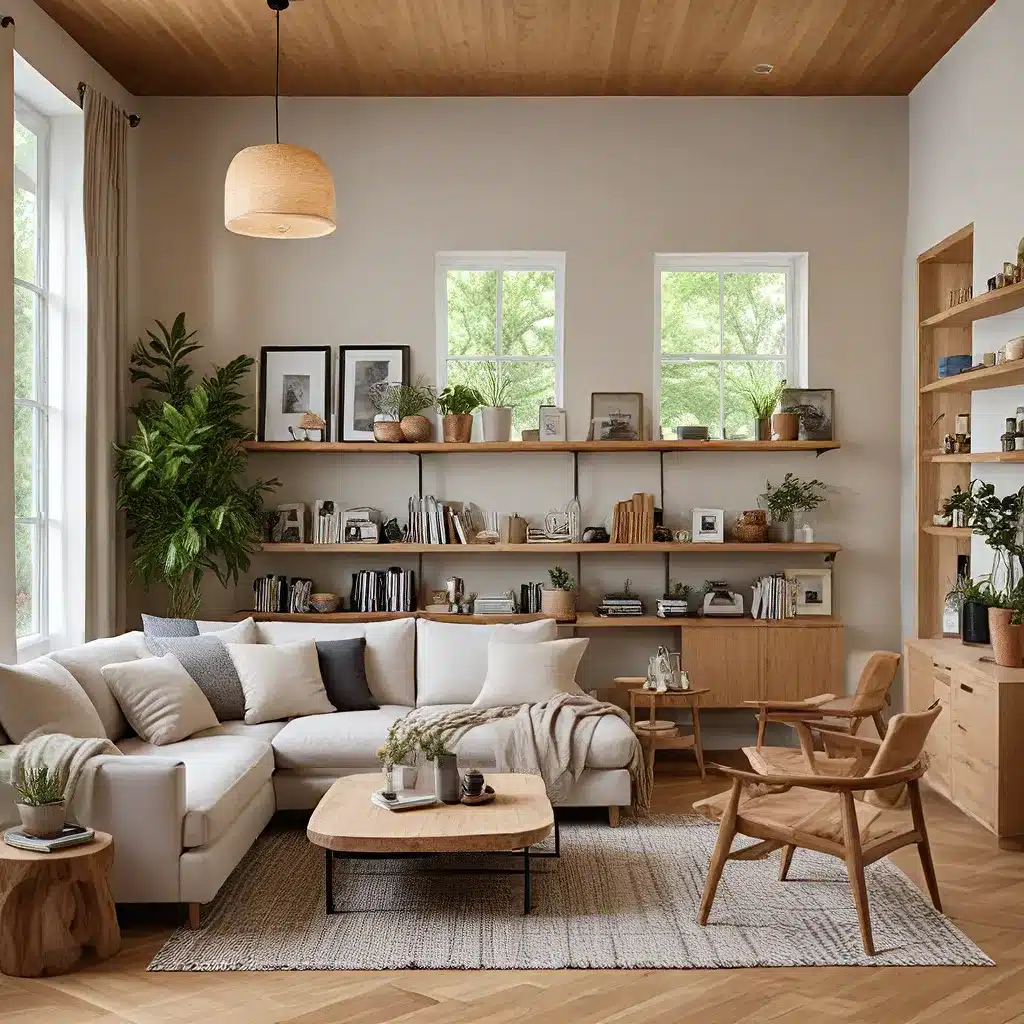
In an era where small-space living has become increasingly prevalent, the demand for innovative and sustainable design solutions has never been higher. As homeowners and design enthusiasts alike seek to maximize functionality and minimize their environmental impact, the intersection of conscious curation and smart space planning has emerged as a driving force in the world of interior design.
Embracing the Minimalist Mindset
One of the foundational principles of sustainable design is the minimalist mindset. By paring down to the essentials and curating a purposeful collection of furnishings and decor, homeowners can create a harmonious and visually appealing environment that feels both tranquil and purposeful. This approach not only reduces clutter and visual noise but also minimizes the environmental impact of overconsumption.
Urban Grace Interiors, a leading interior design firm, has embraced this philosophy wholeheartedly. Their design experts understand that small-space living often requires a strategic and thoughtful approach to ensure every element serves a distinct function or aesthetic purpose. By curating a carefully selected collection of furnishings, accessories, and lighting, they help their clients achieve a sustainable and intentional living environment that reflects their personal style and values.
Multifunctional Furniture and Space-Saving Solutions
As space becomes an increasingly precious commodity, the demand for multifunctional furniture and space-saving solutions has skyrocketed. Savvy designers are now employing innovative techniques to maximize the utility of every square foot, without compromising on style or comfort.
One such example is the rise of transformative furniture, where pieces seamlessly transition from one function to another. Think coffee tables that convert into dining surfaces, or ottomans that double as storage units. By incorporating these versatile and adaptable pieces, homeowners can create dynamic spaces that adapt to their evolving needs and lifestyle changes.
Embracing Natural Materials and Textures
In the pursuit of sustainable design, the conscious curation of natural materials and textures has become a hallmark of the industry. Eco-friendly and renewable resources, such as bamboo, cork, rattan, and reclaimed wood, are now taking center stage in the design world, offering homeowners a chance to reduce their environmental footprint while enhancing the aesthetic appeal of their living spaces.
These natural materials not only lend a warm and organic feel to a room but also often require less energy-intensive manufacturing processes than their synthetic counterparts. Conscious consumers are increasingly drawn to the authenticity and character these materials bring, further fueling the demand for sustainable and intentional design choices.
Multifunctional Spaces and Zoning
As homeowners seek to maximize the potential of their limited square footage, the concept of multifunctional spaces has become a game-changer in the world of small-space living. By strategically zoning and repurposing areas within a home, designers can create versatile environments that seamlessly transition between different functions, such as a home office that transforms into a guest room or a living room that doubles as a home gym.
Ctrl + Curate, a renowned interior design and lifestyle blog, has featured numerous examples of this innovative approach, showcasing how skilled designers can leverage space-planning techniques to create multifunctional and sustainable living solutions.
Biophilic Design and Greenery Integration
In the pursuit of conscious curation and sustainable design, the integration of biophilic elements has become a key trend. Biophilic design, which emphasizes the connection between humans and nature, has been shown to have numerous benefits, including improved mental well-being, reduced stress, and increased productivity.
By incorporating lush greenery, natural light, and organic materials into their designs, interior designers are helping homeowners create living spaces that feel more harmonious and rejuvenating. This approach not only enhances the aesthetic appeal of a room but also contributes to a healthier and more sustainable living environment.
GSAP, a leading JavaScript animation library, has played a crucial role in bringing these biophilic and sustainable design elements to life through interactive and visually captivating experiences.
Luxury and Sustainability: A Harmonious Pairing
The notion that sustainable design and luxury living are mutually exclusive is a misconception that is rapidly being dispelled. In fact, the savviest interior designers are now finding ways to seamlessly blend these two seemingly disparate concepts, creating living spaces that are not only environmentally conscious but also exude a sense of refined elegance and sophistication.
By leveraging high-quality, eco-friendly materials, innovative space-planning strategies, and a keen eye for detail, these designers are redefining luxury living in a way that prioritizes conscious curation and sustainability. The result is a harmonious blend of form and function, where homeowners can indulge in the finer things in life while minimizing their environmental impact.
Elevating the Small-Space Experience
As the demand for small-space living solutions continues to grow, the role of professional interior designers has become increasingly vital. These experts possess the knowledge, creativity, and technical skills to transform compact living environments into functional, stylish, and sustainable havens.
Urban Grace Interiors is a testament to this trend, with their design team specializing in crafting personalized small-space living solutions that seamlessly integrate conscious curation, sustainable materials, and luxury touches. By collaborating closely with their clients, they are able to create unique and intentional spaces that cater to individual needs and preferences while upholding the principles of environmentally responsible design.
Conclusion: Embracing the Future of Sustainable Design
As the world continues to evolve, the need for sustainable and conscious design solutions has become increasingly paramount. By embracing the principles of minimalism, versatility, and biophilic integration, interior designers and homeowners alike are shaping the future of small-space living in a way that is both environmentally responsible and aesthetically captivating.
Through the conscious curation of materials, the strategic zoning of multifunctional spaces, and the integration of luxury touches, the design industry is proving that sustainable and intentional living can be both practical and aspirational. As we move forward, the continued collaboration between design professionals, conscious consumers, and innovative technologies will undoubtedly pave the way for even more remarkable small-space living solutions that redefine the boundaries of what is possible.

